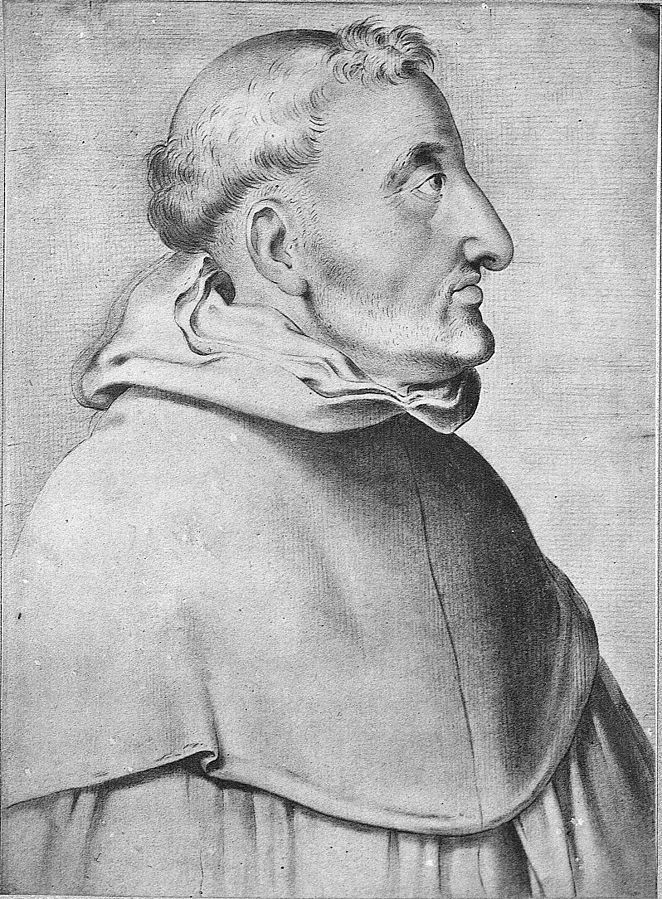 Chapter 5 of the Gospel according to Matthew concludes with an invitation that resonates throughout both the Old and New Testament:
Chapter 5 of the Gospel according to Matthew concludes with an invitation that resonates throughout both the Old and New Testament:
“Be you therefore perfect, as also your heavenly Father is perfect.”
This is a call to holiness which, for the baptized, is not optional but mandatory. But if we accept this, where should we begin? In other words, how can we become saints? As always, to find the answer to such questions, we turn to the great masters of Christian Tradition.
Return to the Gospel: The Essence of the Message of Fatima
Undoubtedly, the French Revolution was the event that sparked a wave of revolts against the Social Reign of Christ, a reign built upon the millennia-old alliance between altar and throne. In the centuries that followed, no supernatural event has been more significant than the apparition at Fatima (1917). The essence of this event can be summarized in the words of the Blessed Virgin Mary, who, after the vision of hell, spoke plainly and clearly:
“The war is going to end: but if people do not cease offending God, a worse one will break out during the Pontificate of Pius XI.”[i]
If we add to this the threefold proclamation of the Angel, who held a flaming sword in his left hand, we find the key to overcoming the immense crisis the world and the Church are currently experiencing:
“Penance, Penance, Penance!”
The very essence of the Gospel is contained in this message: “Do penance, for the kingdom of heaven is at hand” (Matthew 4:17).
The Queen of the Universe, the Immaculate Virgin Mary, calls us to cease committing evil; the Angel urges us to embrace that spiritual state and the penitential deeds associated with it, which alone can attract God’s mercy and His abundant graces upon us. In fact, the very essence of the Gospel is contained in this message. The words first spoken by the greatest of the prophets, John the Baptist, and then by our Lord Jesus Christ Himself, were repeated by these two divine messengers who came to awaken the modern world from what Saint John Chrysostom called “the drunkenness of sin.” And these words tell us everything we need to know:
“Do penance, for the kingdom of heaven is at hand” (Matthew 4:17).
All the spiritual masters of the Christian era have “resisted unto blood, striving against sin” (Hebrews 12:4) in order to fulfill what God, the Blessed Virgin Mary, and the Angel of Fatima insistently ask of us. Some saints went even further: they left us a priceless treasure—teachings on how to triumph in this battle “against principalities and powers, against the rulers of the world of this darkness, against the spirits of wickedness” (Ephesians 6:12).
But everything has a beginning. What exactly is that beginning? If we decide to pursue the ideal of holiness, where do we start? Today, we will explore the teachings of one of the greatest masters of Christian mysticism and asceticism.
 Fray Luis de Granada
Fray Luis de Granada
Admirers of the Venerable Louis
If someone were to ask what saints such as Vincent de Paul, Teresa of Ávila, Francis de Sales, Rose of Lima, and Charles Borromeo have in common—besides their ardent love for God and neighbor—the answer would be easy to find: they were all great admirers of a particular author. And not just any author, but one who could truly be considered a “professional writer”—Venerable Louis of Granada (1504–1588).
His books on spiritual theology—especially the most famous ones: The Book of Prayer and Meditation (1554), A Memorial of Christian Life (1565), and The Sinner’s Guide (1556–57)—are bestsellers in Christian spirituality. The vast number of editions and surviving copies attest to this. Beyond this empirical fact, the testimonies of saints who read his works are overwhelming.
For instance, one statement attributed to Saint Teresa of Ávila claims that reading his books contributed to the conversion of at least one million (!) souls in his time.[ii] Unfortunately, I have not yet identified the exact work where the Carmelite saint made this assertion. However, I have found another equally significant reference in her Constitutions. When discussing what kinds of books should be present in Carmelite monasteries, the abbess concludes the list with the following words:
“(…) and those books written by Fray Luis de Granada and by Father Fray Pedro de Alcantara. This sustenance for the soul is in some way as necessary as is food for the body.”[iii]
In a note discussing which books by Fray Luis the saint had in mind, editors identify the same three works mentioned above: The Book of Prayer and Meditation (Salamanca, 1554), The Sinner’s Guide (Lisbon, 1556), and The Memorial of Christian Life (Lisbon, 1565).[iv]
The decision to sin no more is also the response we must give to the Blessed Virgin Mary, who asks that the baptized cease offending God.
A book by Thomas Austin Dyson, Lives of Some of the Sons of St. Dominic, cites a letter from Saint Francis de Sales in which he offers valuable advice to another bishop on how to read the writings of the Venerable Dominican:
“Have by you Lewis of Granada entire. Let him be your second breviary. Saint Charles Borromeo had no other theology to preach but Lewis of Granada, yet he preached very well; but this is not his principal use; it is that he will form your mind to the love of true devotion and all spiritual exercises necessary for you. My wish is that you begin to read him with the great Guide for Sinners, that you then pass on to the Memorial, and, in fine, that you read all he wrote. But to read him with fruit you must not run through him hastily; he must be pondered, and have his full weight, and chapter after chapter must be mused upon and applied to the soul with much thought and prayer to God. You must read him with reverence and devotion, like a book containing the most useful inspirations man can receive from on high, and thereby reform all the powers of the soul.”[v]
Thus, what the great Doctor Caritatis recommended to his fellow bishop was not mere reading, but deep meditation on the texts of Venerable Louis (Luis/Ludovic) of Granada. Aware of the immense graces God bestows through his works, Saint Francis emphasized the discipline of reflection and prayer accompanying their reading, which can bring enormous spiritual benefits. The reason for this lies in the quality of Louis de Granada’s writings: they are not only clear but also simple without being simplistic, while also possessing great stylistic beauty. Undoubtedly, however, their clarity is their greatest strength.
The First and Most Powerful Remedy Against Sin
Among the many remedies, the first with which we can begin the path of meditation is The Sinner’s Guide. Despite its impressive length, the structure of the book is simple. More than half of it is dedicated to arguments in favor of a virtuous life. This reflects the conviction shared by all the saints throughout history: the defining trait of a Christian is a virtuous life.
Holiness is synonymous with repentance for past sins, penitential works, and good (i.e., meritorious) deeds—all grounded in a firm decision to sin no more.
At the end of the 28 chapters in which he presents every imaginable argument proving the necessity of virtue, the Venerable author reveals, in chapter 29, the first remedy against sin: a firm resolution not to commit it.[vi] This, then, is where anyone who wishes to fulfill the words of the Gospel must begin:
“Be you therefore perfect, as also your heavenly Father is perfect” (Matthew 5:48).
The decision to sin no more is also the response we must give to the Blessed Virgin Mary, who asks that the baptized cease offending God. For nothing is a greater offense against our Creator than sin itself. But what is the foundation of this resolution? The Venerable author draws our attention to two fundamental principles that underlie it. The first is stated at the beginning of Chapter 29:
“Before entering upon this subject, bear in mind that there; are two principles in which you must be firmly established if you would change your life and give yourself to God. The first is a just appreciation of the importance of the labor you are about to undertake; you must be convinced that this is the sole interest, the sole profit, the sole wisdom in the world.”
Then, after a series of substantial biblical citations, he presents the second principle:
“The second principle with which you must be imbued is that as this is such a glorious and profitable engagement, you must undertake it with vigor and a firm determination to conquer. Be persuaded that all the dangers which you will encounter will be of little moment compared to the sublime end you have in view. It is a law of nature that nothing great is accomplished without labor and trouble, You will no sooner have resolved to give yourself to God than Hell will send out its forces against you.”
Do not think that passages like this are meant to discourage us. On the contrary, the author seeks only to emphasize how serious and important this work is—the work of tending the soil of our own souls. We must break up the hardened ground, uproot all the weeds, and begin cultivating the good fruits of virtue. The beginning, however—rooted in the two principles above—is singular and emphasized with unwavering firmness:
“Your first determination must be a deep and unshaken resolution never to commit mortal sin, for it can only rob us of the grace and friendship of God. Such a resolution is the basis of a virtuous life.”
A statement like this is worth memorizing. At the very least, it should be repeated daily and recalled whenever we wish to make a good confession. Thus, according to the Venerable Louis of Granada, this is the true beginning of holiness. In summary, the matter is clear:
Holiness is synonymous with repentance for past sins, penitential works, and good (i.e., meritorious) deeds—all grounded in a firm decision to sin no more.
If we understand that by doing this, we fulfill both Christ’s call to penance and conversion as well as the Blessed Virgin Mary’s urgent request to cease offending God, we must acknowledge that we have every reason not to hesitate.
Sancta Maria, Auxilium Christianorum, ora pro nobis!
Latest from RTV — HELL in the HOLY LAND: Israel's Bishops Speak Out on Gaza
[i] The texts containing the visions and the secret can be read on the official Vatican website: https://www.vatican.va/roman_curia/congregations/cfaith/documents/rc_con_cfaith_doc_20000626_message-fatima_en.html [Accessed: 22 February 2025].
[ii] Saint Teresa’s statement is mentioned, for example, on the EWTN website: https://www.ewtn.com/catholicism/library/sinners-guide-9832 [Accessed: 17 February 2025].
[iii] The Collected Works of Sr. Teresa of Avila, Volume Three, Translated by Kieran Kavanaugh, O.C.D. and Otilio Rodriquez, O.C.D., Washington D.C., ICS Publications, Institute of Carmelitane Studies, 1985, p. 321.
[iv] Op. cit., p. 445, notes 7.
[v] Saint Francis of Sales, Letter of 3rd of June, 1603, quoted in Lives of Some of the Sons of St. Dominic, by a Father of the Same Order, New York: D.& J. Sadlier & Company, 1883, pp. 280-281.
[vi] This chapter of the book can be read here: https://www.catholictradition.org/Classics/guide29.htm [Accessed: 22 February 2025]. The entire work can be found online here: https://www.catholictradition.org/Classics/sinners-guide.htm [Accessed: 22 February 2025].





